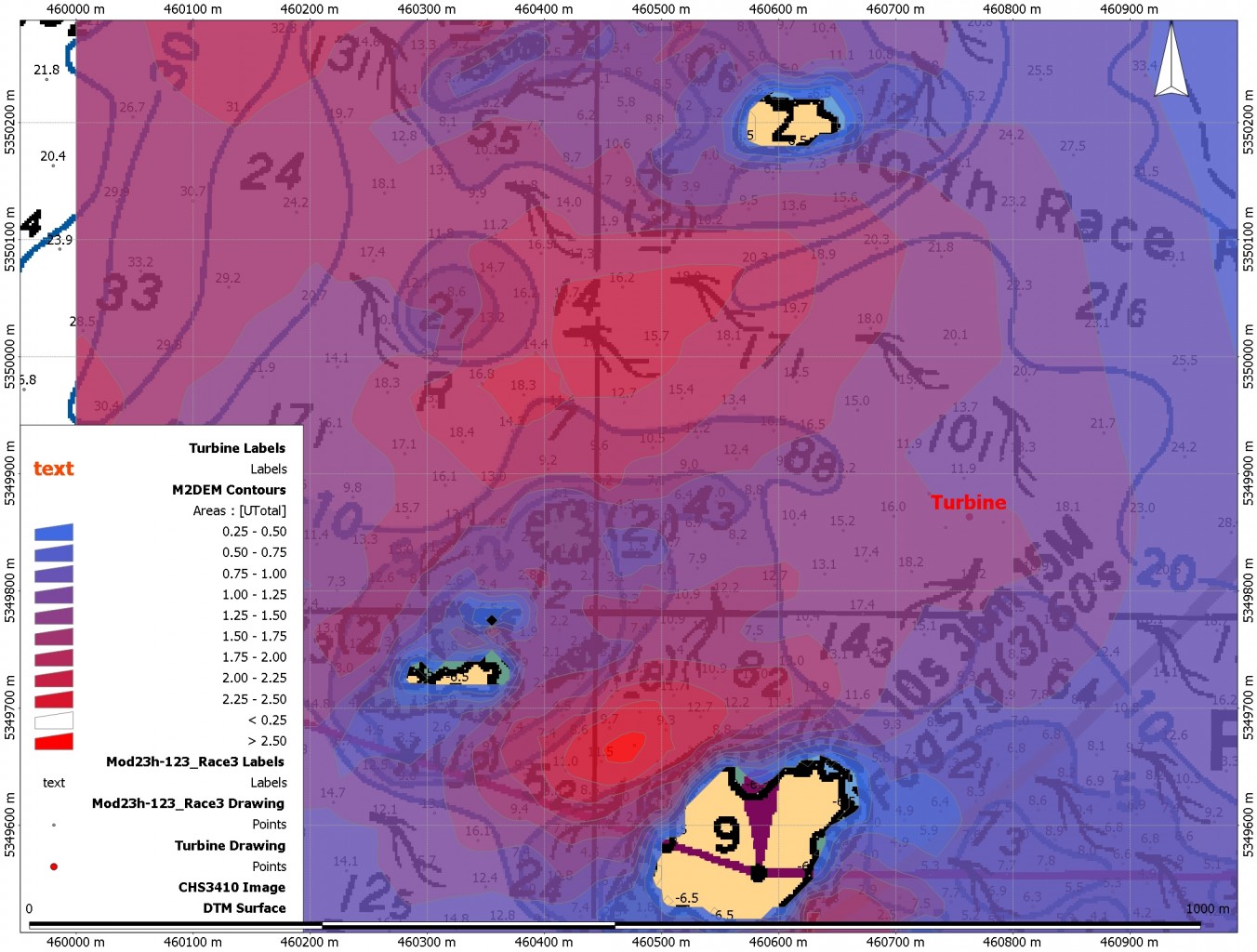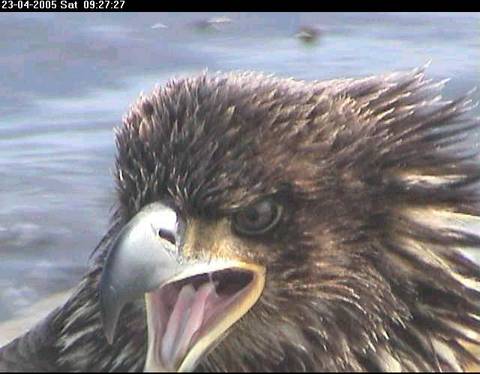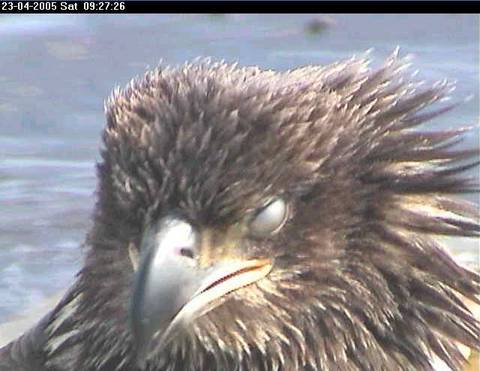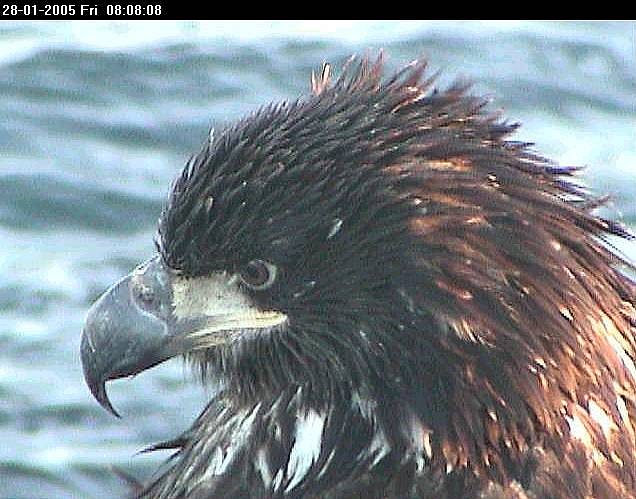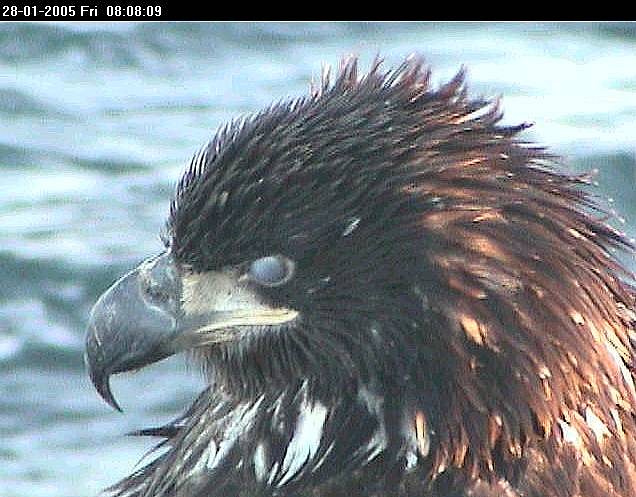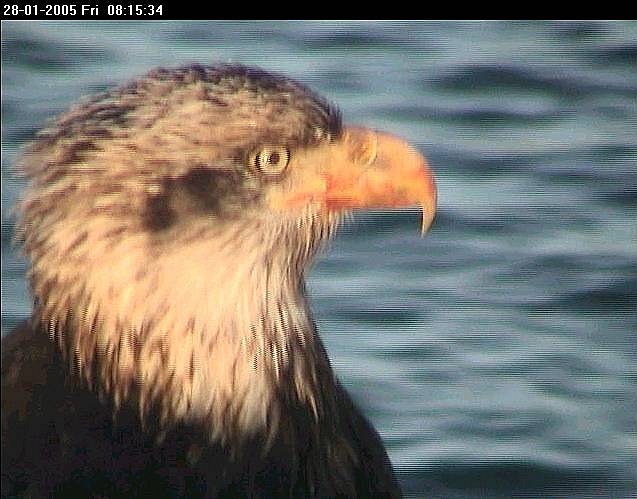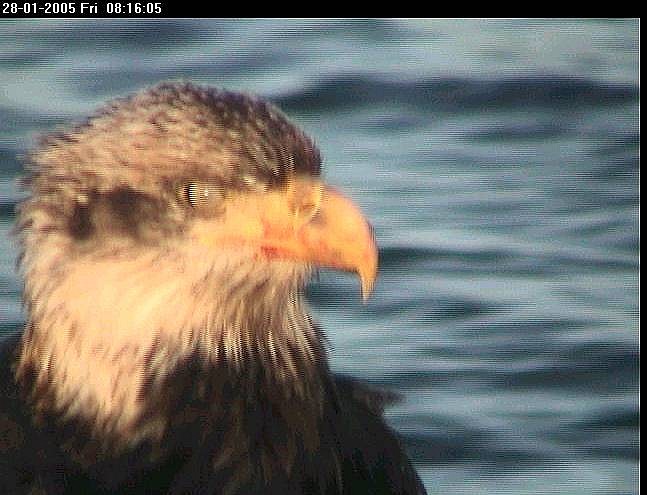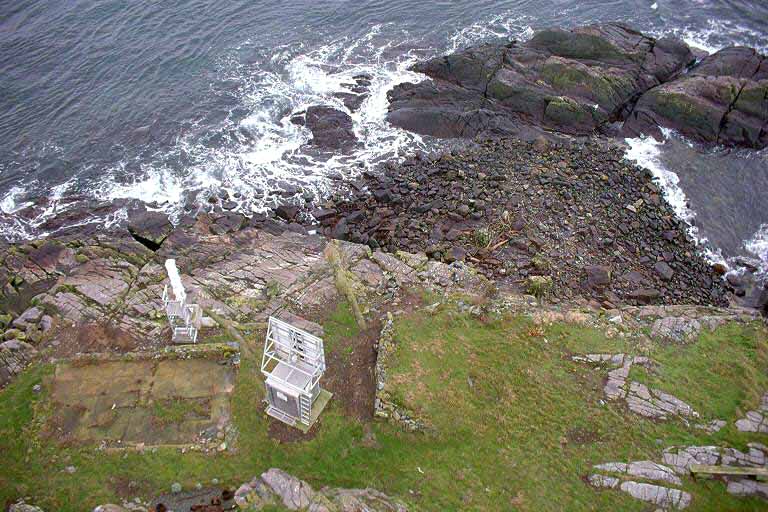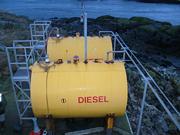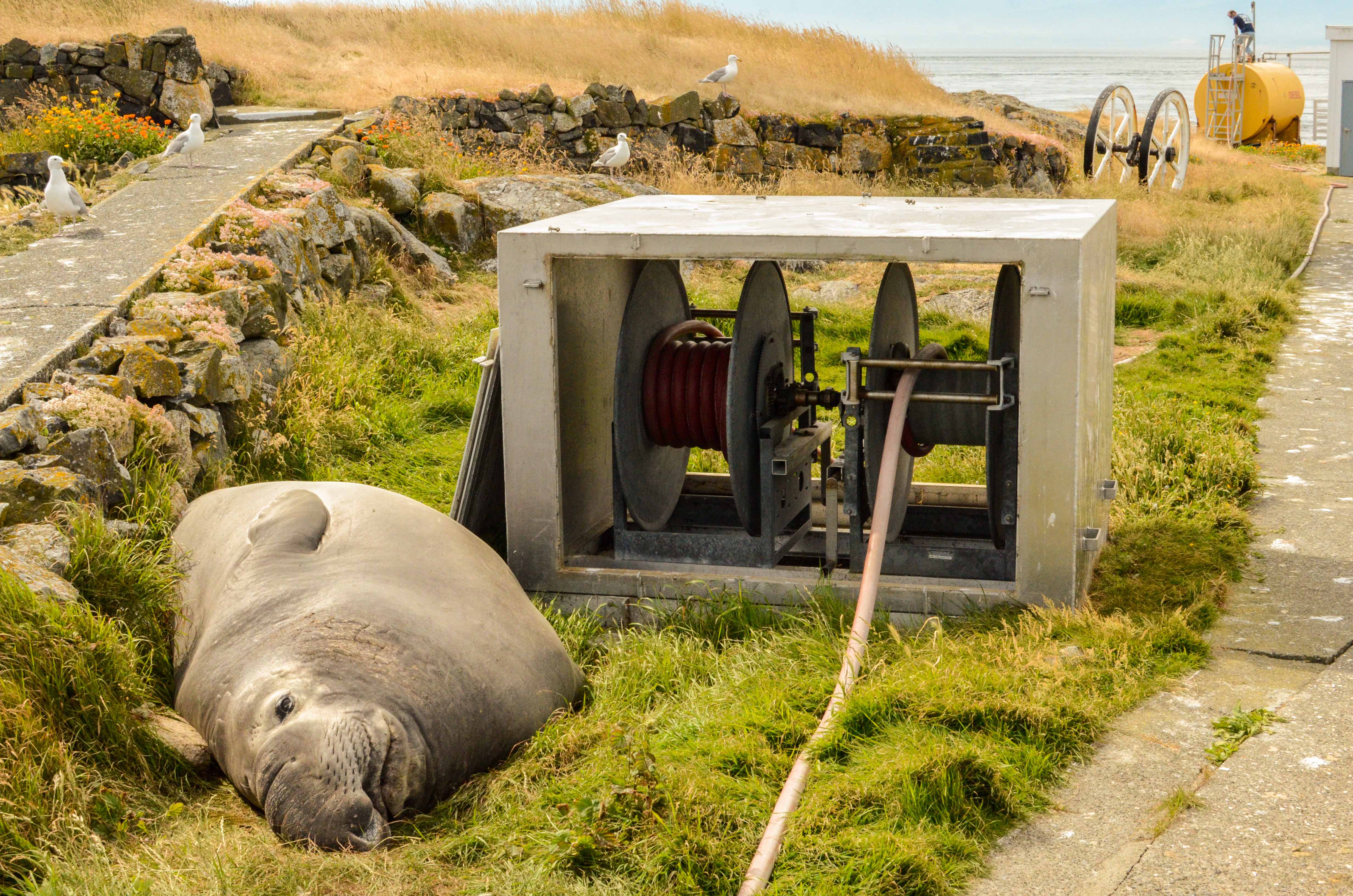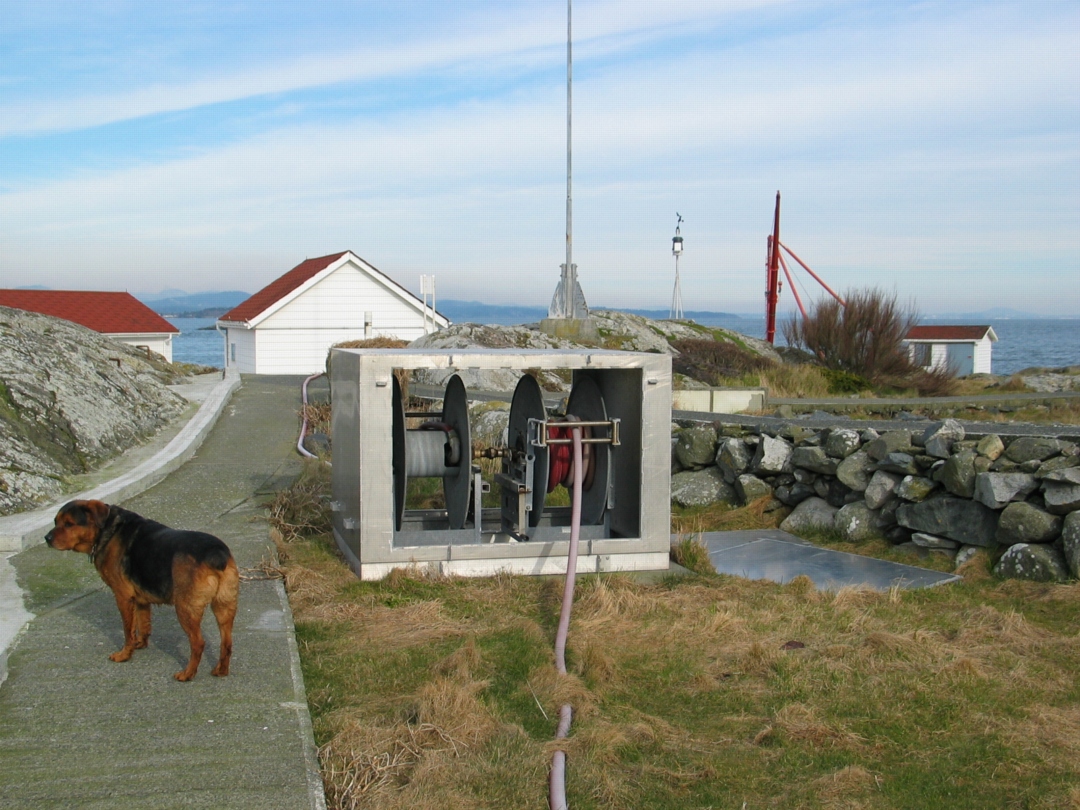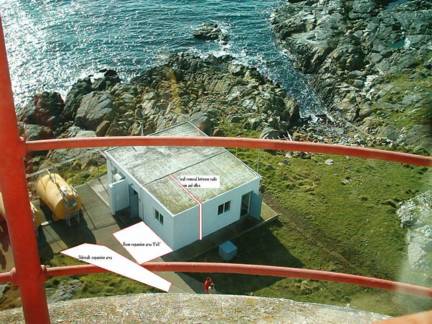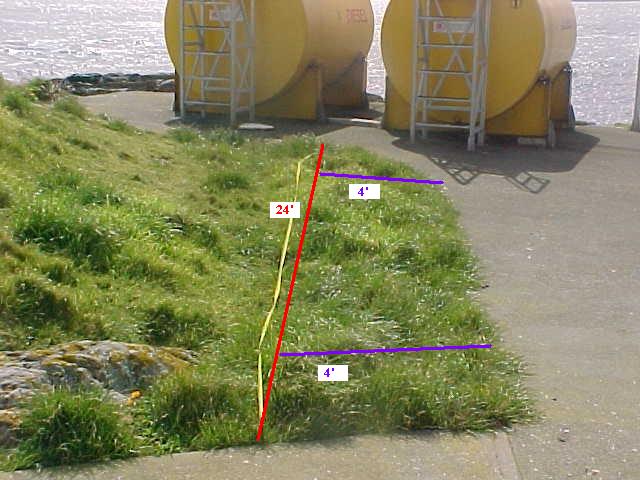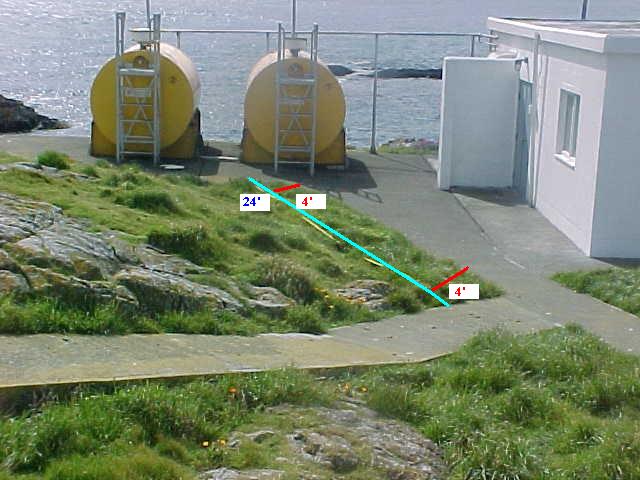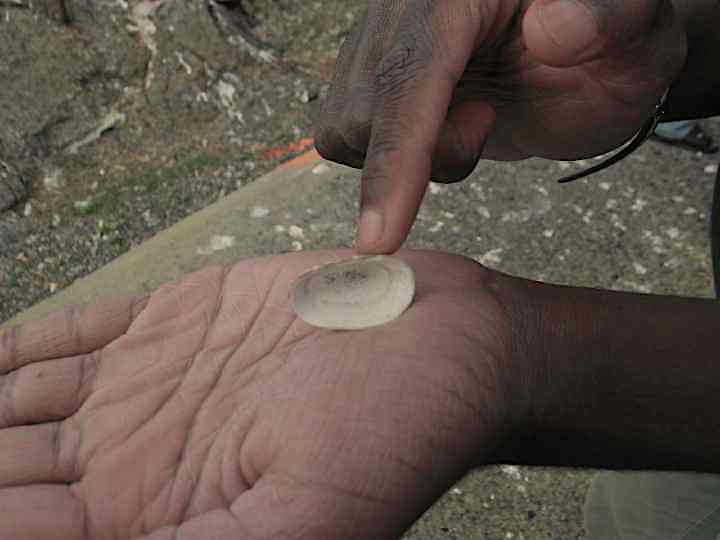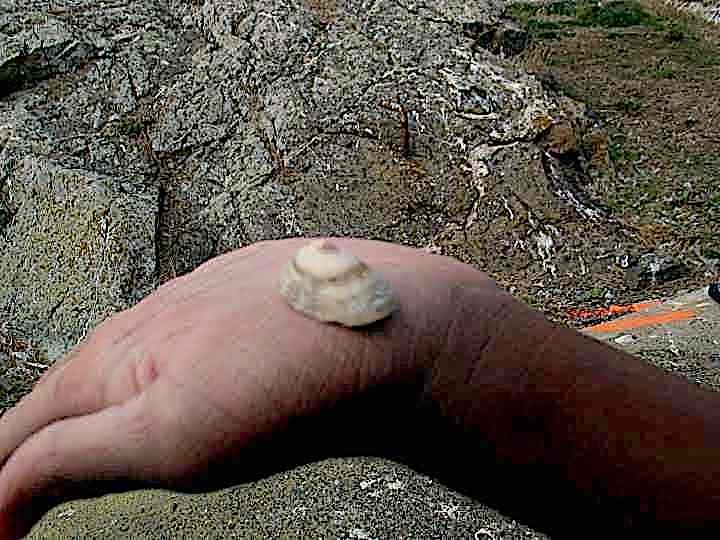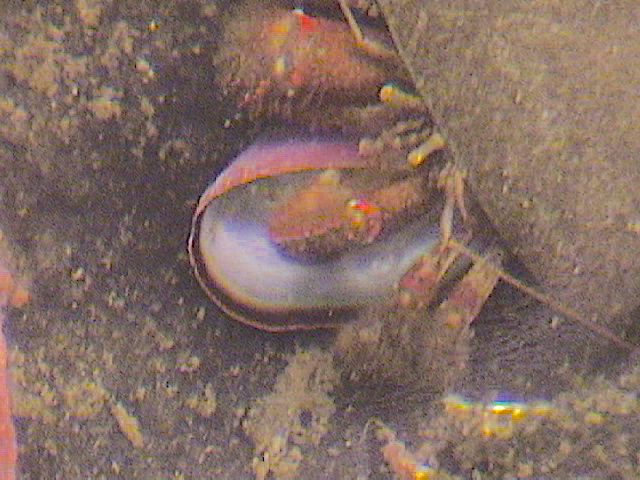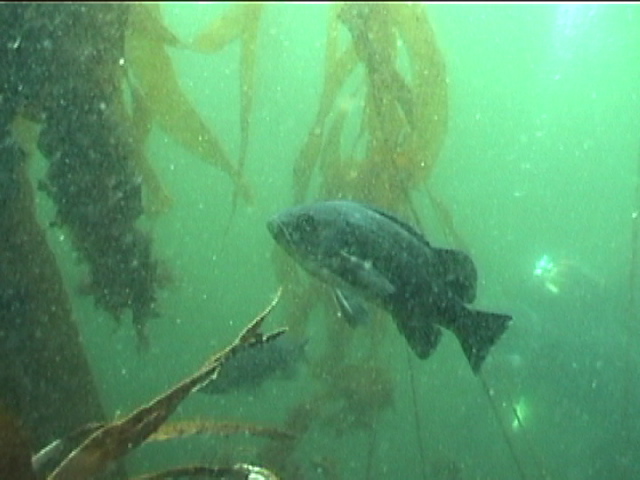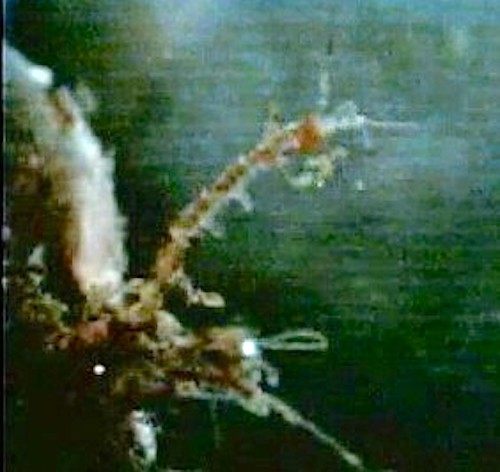Pearson College students took part in the deployment and retrieval of the ADCP instrument in several locations around Race Rocks in order to determine the optimal location for the Tidal Generator installation. This map was the result when the data was analysed:
Monthly Archives: March 2005
The Nictitating Membrane of Eagles
The nictitating membrane of birds protects the eye. Pam Birley captured these images of young eagles close to camera 5 in the spring of 2005 to help us demonstrate this adaptation.
You can find further information about this feature at: http://ebiomedia.com/gall/eyes/protect.html
Air Temperature Effects on organisms at Race Rocks
The abiotic effects of air temperature
on the distribution of organisms at Race Rocks.
In this video we discuss the effects on diatom growth from the increasing temperature which results from the increasing levels of solar energy in the early spring in the upper intertidal zone on Great Race Rocks.
The Traditional Power Generation System at Race Rocks
| Being an isolated Light Station, Race Rocks relied fully on power generated on site up to October of 2006. Electricity was supplied after the start of the light tower in 1860 by a series of diesel run electrical generators.So far we have no information on the kind of generators used in these early years. This page provides a profile of the diesel electrical generating system which now forms part of a back-up for our integrated energy system. |
 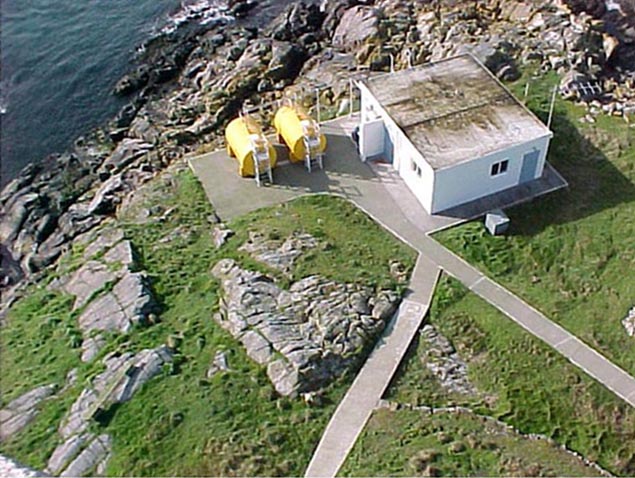 The Engine Room and Oil storage Tanks(2002) The Engine Room and Oil storage Tanks(2002) |
 The delivery of a new generator, November, 2000.This generator had a lower output rating, but would be less expensive to run since there were no longer two families living on the island since automation. The delivery of a new generator, November, 2000.This generator had a lower output rating, but would be less expensive to run since there were no longer two families living on the island since automation.
The hoses for transporting diesel oil to the island are wound on a central drum on the island. These reach from the dock where fuel is brought by boat, over to the oil storage tanks at the engine room. Alex Chan beside the diesel fuel storage tank. 2005 Link to the CARBON CYCLE |
Velella velella : The Race Rocks Taxonomy
Velella vellella are actually colonial hydroids, related to jellyfish and most closely related to the Portuguese Man-of-War. They occur only rarely in the waters of Race Rocks, coming in apparently with warmer Pacific currents. They were found washed up and stranded in a tide pool. The little fringe hanging on the bottom side are made up of the feeding tentacles. 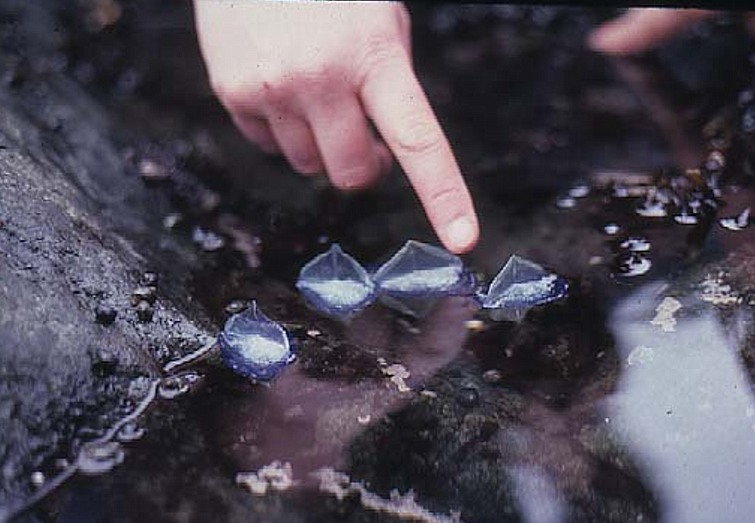 “I have only seen Velella at Race Rocks twice since 1976. This picture I took in the early 1980’s shows a ‘flotilla’ in a tidepool.” (Garry Fletcher, 2005.)
“I have only seen Velella at Race Rocks twice since 1976. This picture I took in the early 1980’s shows a ‘flotilla’ in a tidepool.” (Garry Fletcher, 2005.)  In May of 2005, Wilfred Kroese of the Netherlands sent in this picture of a specimen he had found while touring in BC. When we informed him of the identity, he replied: “Due to your answer I was also able to find the Dutch name for it:‘bezaantje’, a name similar to one of the sails on a large sailboat. One that is attached to the rear mast.”
In May of 2005, Wilfred Kroese of the Netherlands sent in this picture of a specimen he had found while touring in BC. When we informed him of the identity, he replied: “Due to your answer I was also able to find the Dutch name for it:‘bezaantje’, a name similar to one of the sails on a large sailboat. One that is attached to the rear mast.”
Velella are actually colonial hydroids, related to jellyfish and most closely related to the Portuguese Man of War. They occur only rarely in the waters of Race Rocks, coming in apparently with warmer Pacific currents. They were found washed up and stranded in a tide pool. The little fringe hanging on the bottom side are made up of the feeding tentacles. They actually use their sails to traverse the open ocean in a group, and apparently in different hemispheres their ‘sails’ are angled differently to catch the wind and go with the proper currents…( Maybe that’s where early sailors figured out how to rig a ship!)
Physical appearsance: The Velella velella as been given the common name of by-the-wind-sailor because of its semicircular sail placed in a 45° angle on the float. The float contains a series of sealed air chambers that provide its buoyancy. This part of the by-the-wind-sailor is easily recognizable by its deep blue color; it can also measure up to 10cm in length. Hanging down from the float, you can also observe short tentacles. If the wind is blowing … – North-West, South-East: the float will drift left of the wind direction – South-West, North-East: the float will drift right of the wind direction Global distribution: This organism is found all around the world, in temperate or tropical seas.
Habitat: The Velella velella lives on the surface of the open ocean. After a storm you can also found them by the coasts.
Feeding: This organism feeds on pelagic organisms, including young fish and zooplankton. Predators: The by-the-wind-sailor has three predators: a sea slug, Fiona Pinnata; a sunfish, Mola Mola and a violet snail, Janthina Janthina.
Mode of reproduction: the sexual reproduction and early development are little none. Interesting fact: The Velella velella is not dangerous to humans but its better if you don’t touch them. If you do, don’t touch sensible skin such as your eyes or your face because some irritation may result.
Classification:
| Domain | Eukarya |
| Kingdom | Animalia |
| Phylum | Cnidaria |
| Class | Hydrozoa |
| Order | Hydroida |
| Family | Velellidaea |
| Genus | Velella |
| Species | velella |
| Common Name: | by-the-wind sailor |
References: N. Kozloff, Eugene. Marine Invertebrates of the Pacific Northwest. Seattle and London: university of Washington press, 1996 Morris, Abbott, Haderline. Intertidal Invertebrates of California. Stanford, California: Stanford University Press, 1980. Velella velella. By-the-wind-sailor. 2003. Marine Biological Association of the United Kingdom. November 10th 2005. http://www.marlin.ac.uk/species/Velellavelella.htm Velella Velella. 2003. National Sea Grant College Program of the U.S. Department of Commerce’s National Oceanic and Atmospheric Administration. November 10th 2005.http://seagrant.oregonstate.edu/sgpubs/onlinepubs/g03004.pdf “David Wrobel.” Velella Velella (Linnaeus, 1758): By-the-wind Sailor. The Jellies zone. November 10th 2005. http://jellieszone.com/velella.htm
see this link for other hydroids: https://www.racerocks.ca/tag/hydroid/
|
This file is provided as part of a collaborative effort by the students, faculty,staff and volunteers of Lester B. Pearson College
|
2005 | Virginie PC year 32 |
Preliminary Screening: BC Parks Impact Assessment
File No: 85700-35/0210206
BC Parks Impact Assessment Process
Level 1, Preliminary Screen Report
(See Users Guide, pp. 9 to 12)
Name of Action: Expand generator shed for battery storage for Current Turbine Project
Proponent: Lester B Pearson College
Review Date(s): March 17,05 Page: 1of 3
A. Issues and Environmental Components
- List any issues of concern that have been or may be raised by BC Parks, other government agencies, First Nations, or the public.
Impacts of expanding sidewalk footprint. Impact on nesting birds.
ie: Construction should take place when birds aren’t nesting.
No habitat loss should take place.
Impacts that could potentially be damaging to other wildlife and plant communities as a result of demolition/construction activities.
- Identify any geographic “hotspots” at or close to the proposed action (e.g., areas of high use, concentrations of facilities, wilderness conservation zones, unique landscape features).
The proposed footprint of the engine room expansion is represented below. Note the sidewalk extension is made more clear in following diagrams.
This would accommodate the floor plan represented following:
The outside wall with the double door in the technical diagram is the part that would occupy the small white square above.
This would accommodate the floor plan represented following:
The outside wall with the double door in the technicall diagram is the part that
would occupy the small white square above.
- Identify any important environmental, recreational, social or economic values in the area of the proposed action and/or the area surrounding the proposed action (e.g., rare or endangered species, hiking experience, midden site). Include a rationale as to why the value is considered important.
Ensure no endangered or rare plant species or other habitat is lost as a result of expansion of sidewalk. Reduce size to minimum needs.
This area has been surveyed on April 6 /05 by Pam Thuringer of Archipelago Marine and she has indicated there are no endangered plant species therein. Most of the grasses are introduced species, with a few invasive species. None of the rock outcrop up the slope is impacted by this extension.
“I have recommended that the sod that is lifted, should be transplanted to another area of the island, for instance to a corner of the top of the concrete covered cistern, which could support a grass community if adequate soil depth was restored, or other areas which currently have concrete which could be moved such as the “sidewalk to nowhere!” below, located by the boat shed. I think that restoration of this 17 by 4 foot area would be a suitable mitigation for the impacted area by the engine room, as it adds habitat in an area more suitable for nesting. ”
(Garry Fletcher)
Preliminary Screen Checklist Page: 2of 3
Complete the following based on information available and/or the experience of BC Parks staff at the time of the review.
- BC Parks has a responsibility to comply with the following Acts and regulations. Indicate that the proposed action complies with the following: Done ( or N/A)
Park Act, Park Amendment Acts Yes
Ecological Reserve Act Yes
An order issued under the Environmental Land Use Act n/a
BC Environmental Assessment Act n/a
Waste Management Act n/aHeritage Conservation Act (i.e., Archaeological Impact Assessment Guidelines) n/a
Federal Fisheries Act (Department of Fisheries and Oceans) n/a
Other (specify):
Comments:
BC Parks should ensure that all actions comply with BC Parks policies. Indicate that the proposed action complies with the following: Done
Approved management plan or management direction statement (MDS)Yes
BC Protected Areas Strategy: Resource and Recreation Use Guidelines for Protected AreasYes BC Parks Policy including conservation and recreation goals (Striking the Balance) Yes
BC Parks Policies (specify):Eco reserves set aside for protection and research Yes
BC Parks ConservationProgramPolicies yes
BCParksAnnualManagementPlan (i.e.,valuesandtargets)n/a
Other (specify):
Comments:
Page:3 of 3 3.
Document which agencies /stakeholders that have been or should be notified and/or contacted: yes” Done ( or N/A)
Conservation Data Centre n/a Ministry of SRM (specify branch):
Ministry of Forests (i.e., Range Act) n/a
Ministry of Energy and Mines (Mineral Tenure Act) n/a
Ministry of Health Services n/a>
First Nations Yes
Agencies responsible for broader level plans (i.e., Regional District, LRMP) n/a
Other (specify):
Comments (include name and title of contact):
The proposed action is likely to result in the following impacts (check all that apply) Done
(U or N/A)
Adverse and permanent effects on the important conservation, recreation and/or cultural heritage values n/a
Adverse and permanent effects on the character and aesthetics of the protected area n/a
Adverse effects to endangered, threatened or vulnerable or regionally significant species, populations and habitats (i.e., red/blue-listed species/habitats, biogeoclimatic representation) U
Adverse effects to critical or geographically unique characteristics U
Adverse effects to public health and safety n/a
Adverse effects to traditional use of the area by First Nations n/a
Adverse effects to local communities n/a
Adverse effects to the recreational use or enjoyment of the park (regardless of the intended benefits of the proposed action) n/a
Economic implications, such as operating costs, that cannot be maintained over time n/a
A high level of controversy or public concern regarding the action n/a
Effects of the action, which when combined with the effects of other actions in the region, may result in cumulative impacts n/a
Implications which may be precedent-setting and should therefore be considered in the context of similar future actions n/a
Comments (use corresponding letters to refer to specific impacts listed above):
- Level 1 report should recommend appropriate times and methods for construction to ensure birds /wildlife impacts are kept to a minimum.
The window of work for the sidewalk construction will be in the next few weeks. It is scheduled to start on April 18, well before the onset of nesting in late May. We have given the end of April as a deadline for the sidewalk extension and any other on land work that may compromise the bird nesting habitat to be completed.
Concrete will be made on site from materials transported to the island.
Garry Fletcher and /or Chris Blondeau will be on site to oversee the environmental concerns and Brian Emmett and Pam Thuringer and staff of Archipelago Marine have been contracted to do an ongoing environmental assessment for the duration of the construction phase of the project during the next year.
- An on ground review of proposed sidewalk location and reduced sidewalk footprint recommended.
See photos above.
Lottia instabilis: The Race Rocks taxonomy
The unstable limpet measuring approximately 3-4 cm is brown on its exterior and interior. It’s saddle-shaped when turned on it edge. Its habitat at Race Rocks is on the stipes (stems) of Pterygophora always growing subtidally.Thus the uneven margin underneath. It’s range is from Alaska to California
Kingdom: Animalia
Phylum: Mollusca
Class: Gastropoda
(unranked): clade Patellogastropoda
Superfamily: Lottioidea
Family: Lottiidae
Genus: Lottia
Species: L.Instabilis
Other Members of the Phylum Mollusca at Race Rocks.
|
and Image File |
 The Race Rocks taxonomy is a collaborative venture originally started with the Biology and Environmental Systems students of Lester Pearson College UWC. It now also has contributions added by Faculty, Staff, Volunteers and Observers on the remote control webcams. 2005-Joel Julius PC year 31. The Race Rocks taxonomy is a collaborative venture originally started with the Biology and Environmental Systems students of Lester Pearson College UWC. It now also has contributions added by Faculty, Staff, Volunteers and Observers on the remote control webcams. 2005-Joel Julius PC year 31. |
Lottia digitalis: Finger Limpet– The Race Rocks taxonomy
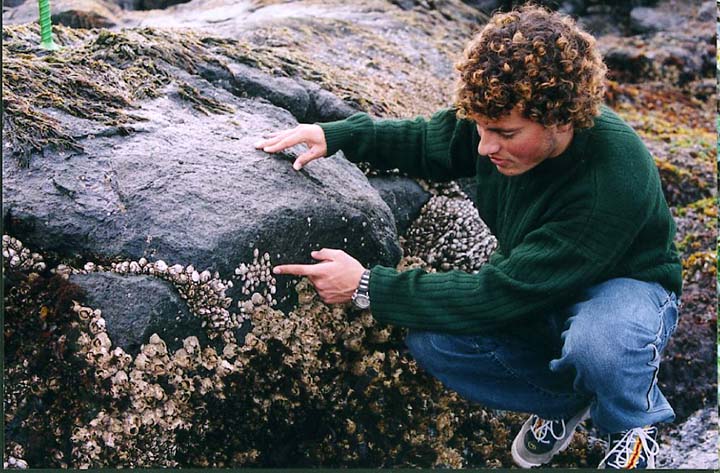 Shamsher is pointing to a cluster of Lottia digitalis in the high intertidal area by peg 5b.
Shamsher is pointing to a cluster of Lottia digitalis in the high intertidal area by peg 5b.
the artificial tidepool, this cluster of Lottia digitalis has been in the same place, to the left of the built stone wall since the building of the pool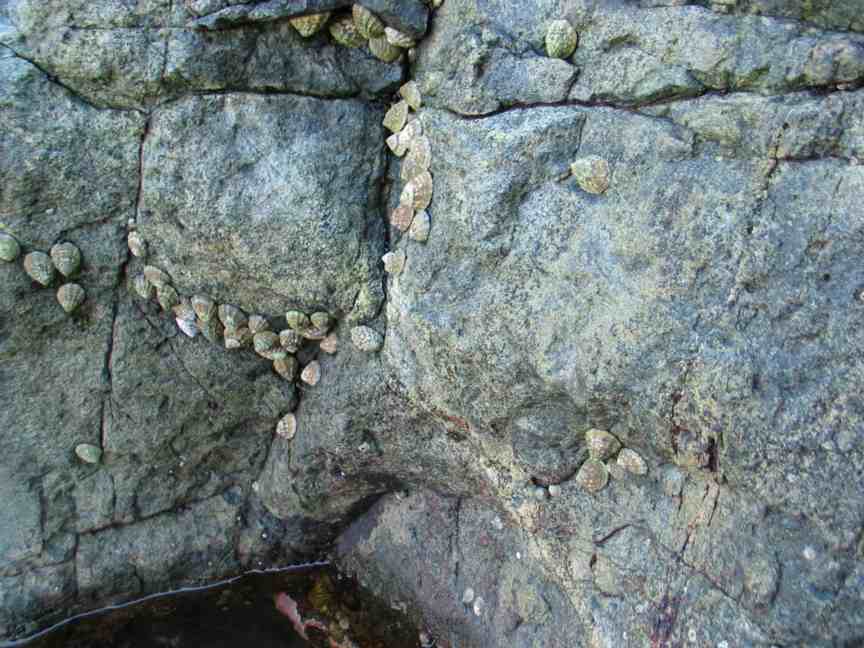 .
.
Behavior: These Limpets breath by drawing water from the left site over the gills out to the right site.
Description: Limpets are basically conical but they have an off-centre peak that curves over. Dark ridges extend from the peak to the edges of the shell. They grow to about 3 cm in diameter.
previously referred to as Collisella digitalis
Kingdom: Animalia
Phylum: Mollusca
Class: Gastropoda
(unranked): clade Patellogastropoda
Superfamily: Lottioidea
Family: Lottiidae
Genus: Lottia
Species: L. digitalis
Lottia digitalis
(Rathke, 1833)
Synonyms
Collisella digitalis
Acmaea digitalis
|
Other Members of the Phylum Mollusca at Race Rocks.
|
and Image File |
 The Race Rocks taxonomy is a collaborative venture originally started with the Biology and Environmental Systems students of Lester Pearson College UWC. It now also has contributions added by Faculty, Staff, Volunteers and Observers on the remote control webcams. March 2005- Shamsher Virk The Race Rocks taxonomy is a collaborative venture originally started with the Biology and Environmental Systems students of Lester Pearson College UWC. It now also has contributions added by Faculty, Staff, Volunteers and Observers on the remote control webcams. March 2005- Shamsher Virk |
Sebastes melanops: Black Rockfish– The Race Rocks Taxonomy
Physical description
We frequently see schools of these rockfish hanging about when we are diivng at Race Rocks. As you can see in the video, they remain at a distance as the diver swims into the group. They are a thin bass-shaped fish with few head spines. It is black, blue and black, spotted with grey or blue and grey, with black spots on the backs and dorsal fins.
Global distribution:
It lives in the ocean from the area of Amchitka Island (Auletian Islands) southeast to S. Miguel island and S. Barbara (southern California). We can find it from central California to south eastern Alaska.
Habitat:
It usually lives in mid-water or surface, but it has been captured down to 1.200 feet.
Feeding:
Young fish eat plankton and larvae, old eat mainly fish and zooplankton.
| Predators: Their predators are ling cods, sea lions and pigeon guillemots. Reproduction: Females are viviparous. From September to November they store the sperm before fertilizing the eggs. They let go young from January to May, peaking in February off California. One interesting fact: They live in groups of thousand of elements. They are good swimmers, in fact they can move hundred of miles.References: Probably more than you want to know about the fishes of the Pacific Coast, M. Love, Really Big Press, II edition. |
Andy Lamb and Phil Edgell: “Coastal fishes of the Pacific Northwest”
J.L Hart: “Pacific fishes of Canada”
Domain Eukarya
Kingdom Animalia
Phylum Chordata
sub phylum vertebrata
Class Actinopterygii
Order Pereciformes
Family Scorpaenidae
Genus Sebastes
Species melanops
Common Name:Black Rockfish
and Image File |
 The Race Rocks taxonomy is a collaborative venture originally started with the Biology and Environmental Systems students of Lester Pearson College UWC. It now also has contributions added by Faculty, Staff, Volunteers and Observers on the remote control webcams. March 15 2005- Stefania Marchese PC, year 32 (Italy) The Race Rocks taxonomy is a collaborative venture originally started with the Biology and Environmental Systems students of Lester Pearson College UWC. It now also has contributions added by Faculty, Staff, Volunteers and Observers on the remote control webcams. March 15 2005- Stefania Marchese PC, year 32 (Italy) |
Name: Stefania Marchese,
PC, year 32 (Italy)
Caprella laeviuscla: Smooth skeleton shrimp
We found these Caprellids at a depth of 20 metres attached to hydroids on a Balanus nubilus. They frequently dwell amongst hydroids. The size of this individual was 3mm. These individuals were photographed using a Motic Digital Microscope at 10X magnification. Note the response to stimulation when disturbed by a dull probe.
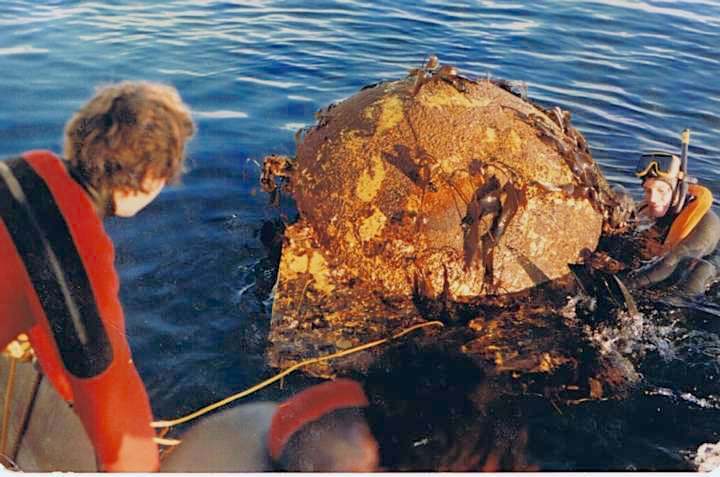
Garry and a Pearson College diver, stabilize the Institute of Ocean Sciences float before hauling it into the boat, This was at the end of one year of monitoring the tidal currents. From this process the Current Tables for Race Passage were developed by IOS.
| This Post tells the story of the Current Meter Installation :
Look closely to see these tiny skeleton shrimp clinging to the bryozoans,The shape and color help the shrimp to blend into their background. Their bodies are long, cylindrical and range from pale brown to green Some species can quickly change color to blend into their backgrounds. Skeleton shrimp look like, and sometimes are called, “praying mantises of the sea.” They have two pairs of legs attached to the front end of their bodies, with three pairs of legs at the back end. The front legs form powerful “claws” for defense, grooming and capturing food. The rear legs have strong claws that grasp and hold on to algae or other surfaces. They use their antennae for filter feeding and swimming. Diet Conservation Notes Cool Facts Shrimp, sea anemones and surf perch prey on skeleton shrimp. The females of some skeleton shrimp species kill the male after mating. Skeleton shrimp use their front legs for locomotion. To move, they grasp first with those front legs and then with their back legs, in inchworm fashion. They swim by rapidly bending and straightening their bodies. To grow, skeleton shrimp shed their old exoskeletons and form new, larger ones. They can mate only when the female is between new, hardened exoskeletons. After mating, the female deposits her eggs in a brood pouch formed from leaflike projections on the middle part of her body. Skeleton shrimp hatch directly into juvenile adults. Source: Monterey Bay Aquarium: Also see: |
Domain Eukarya
Kingdom Animalia
Phylum Arthropoda
Subphylum Crustacea
Class Malacostraca
SubclassEumalacostraca
SuperorderPeracarida
Order Amphipoda
SuborderCaprellidea
InfraorderCaprellida
Family
Genus Caprella
Species laeviuscula
Common Name: Smooth skeleton shrimp
|
Other Members of the Phylum Arthropoda at Race Rocks.
|
and Image File |
 The Race Rocks taxonomy is a collaborative venture originally started with the Biology and Environmental Systems students of Lester Pearson College UWC. It now also has contributions added by Faculty, Staff, Volunteers and Observers on the remote control webcams. March 15 2005- Kevin Mwenda- Pearson College Year 31. The Race Rocks taxonomy is a collaborative venture originally started with the Biology and Environmental Systems students of Lester Pearson College UWC. It now also has contributions added by Faculty, Staff, Volunteers and Observers on the remote control webcams. March 15 2005- Kevin Mwenda- Pearson College Year 31. |

